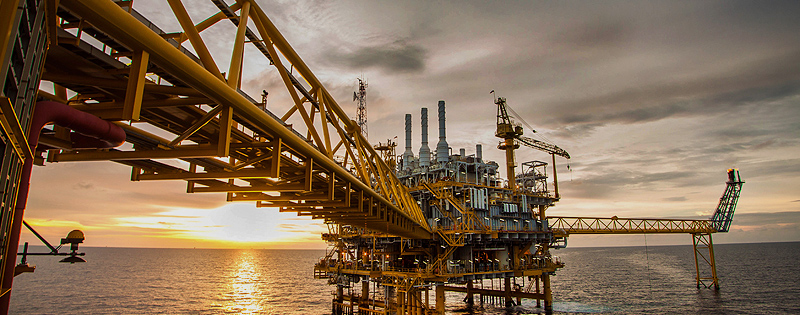Embark on a journey of aerospace innovation with Mechvac Technologies Pvt Ltd’s vacuum pump solutions, meticulously engineered and manufactured in India. Our vacuum pumps are tailored to meet the rigorous demands of the aeronautical industry, offering superior performance, reliability, and precision. From aircraft systems to space exploration, our vacuum pumps play a vital role in advancing aerospace technology, ensuring safety, efficiency, and reliability in flight operations.
Key Applications of Vacuum Pumps in the Aeronautical Industry
1. Aircraft Instrumentation and Avionics
- Gyroscopic Instruments: Vacuum pumps are essential in operating gyroscopic instruments in aircraft, such as the attitude indicator, heading indicator, and turn coordinator. These instruments rely on a vacuum to spin gyroscopes at high speeds, providing pilots with critical information about the aircraft’s orientation, heading, and rate of turn. This is vital for maintaining stable and controlled flight, especially in conditions where visual references are limited, such as in clouds or at night.
- Avionics Cooling: In avionics systems, vacuum pumps are used to help cool sensitive electronic components by maintaining a vacuum around them, reducing the pressure and allowing heat to dissipate more efficiently. This cooling process is crucial for preventing overheating and ensuring the reliable operation of avionics equipment, which is critical for flight safety and performance.
2. Composite Material Manufacturing
- Vacuum-Assisted Resin Transfer Molding (VARTM): Vacuum pumps are used in the manufacturing of composite materials for aircraft structures through processes like Vacuum-Assisted Resin Transfer Molding (VARTM). In this process, a vacuum is applied to draw resin into a mold containing a fiber preform, ensuring thorough impregnation of the fibers and creating a strong, lightweight composite part. This technique is widely used for producing critical aircraft components such as wings, fuselage sections, and control surfaces.
- Vacuum Bagging: In the production of composite parts, vacuum pumps are used in vacuum bagging processes to remove air and volatiles from the composite layup, compacting the layers and ensuring a high-quality finish. The vacuum helps in achieving uniform resin distribution and consolidation, resulting in stronger and lighter composite components that are essential for aircraft performance and fuel efficiency.
3. Aerospace Research and Development
- Vacuum Chambers for Testing: Vacuum pumps are used in aerospace research and development to create vacuum environments within testing chambers. These chambers simulate the low-pressure conditions of high altitudes and space, allowing for the testing of various aerospace components and systems under controlled conditions. This includes testing the performance of engines, materials, and electronic systems to ensure they can withstand the harsh conditions encountered during flight and space missions.
- Space Simulation: Vacuum pumps are critical in creating space simulation environments for testing spacecraft and satellite components. These simulations help engineers assess the performance and durability of equipment in the vacuum of space, including the effects of extreme temperatures, radiation, and vacuum conditions. This testing is crucial for ensuring the reliability and safety of spacecraft during missions.
4. Fuel System Maintenance
- Fuel Tank and Line Testing: Vacuum pumps are used in the maintenance of aircraft fuel systems to test for leaks in fuel tanks and lines. By creating a vacuum within the system, technicians can detect leaks and ensure the integrity of the fuel storage and delivery systems. This helps in preventing fuel leaks, which can pose significant safety risks, and ensures the efficient operation of the aircraft’s engines.
- Dehydration and Decontamination: Vacuum pumps are also used to remove moisture and contaminants from aircraft fuel systems. This process is essential for preventing corrosion and ensuring the purity of the fuel, which is critical for the reliable operation of the aircraft. Dehydration and decontamination help in maintaining the performance and safety of the fuel system, reducing the risk of engine failure and other issues.
5. Landing Gear and Hydraulic Systems
- Hydraulic Fluid Degassing: Vacuum pumps are used to degas hydraulic fluids in aircraft landing gear and hydraulic systems, removing dissolved air and gases that can cause cavitation and reduce the efficiency of the hydraulic system. By ensuring that the hydraulic fluid is free of air bubbles, vacuum degassing helps in maintaining the smooth and reliable operation of landing gear, flight control surfaces, and other hydraulic systems.
- System Flushing and Cleaning: Vacuum pumps are employed in flushing and cleaning hydraulic systems to remove contaminants and ensure the proper functioning of hydraulic components. This process involves creating a vacuum to circulate cleaning fluid through the system, removing debris and preventing blockages. Regular maintenance with vacuum technology helps in extending the lifespan of hydraulic components and reducing the risk of system failures.
6. Vacuum-Assisted Coating and Sealing
- Protective Coatings: Vacuum pumps are used in the application of protective coatings on aircraft components to enhance their durability and resistance to corrosion. Vacuum-assisted coating processes, such as physical vapor deposition (PVD) and chemical vapor deposition (CVD), allow for the precise application of coatings in a vacuum environment, ensuring uniform thickness and high adhesion. These coatings are essential for protecting critical components from wear and environmental damage.
- Sealing Systems: Vacuum pumps are also used in sealing systems for aircraft components, such as windows, doors, and access panels. By creating a vacuum, these systems ensure that seals are applied evenly and securely, preventing air and water leaks that could compromise the integrity of the aircraft’s structure. Vacuum-assisted sealing helps in maintaining the safety and performance of the aircraft, especially during high-altitude flights where pressure differentials are significant.
7. Environmental Control Systems
- Cabin Pressurization and Air Conditioning: Vacuum pumps are used in the environmental control systems of aircraft to help regulate cabin pressure and temperature. They assist in maintaining a stable and comfortable environment for passengers and crew by controlling the air pressure and ensuring the efficient operation of the air conditioning systems. This is crucial for passenger comfort and safety, especially during long-haul flights.
- Dehumidification: In addition to pressurization, vacuum pumps are used to dehumidify the air within the aircraft cabin and cargo areas. This helps in preventing condensation and the associated risks of corrosion and mold growth, ensuring a safe and comfortable environment for passengers and protecting cargo from moisture damage.
8. Vacuum-Assisted Lifting and Positioning
- Component Handling: Vacuum pumps are used in vacuum-assisted lifting systems for handling and positioning large and heavy aircraft components during assembly and maintenance. These systems create a vacuum to securely lift and move components such as wings, fuselage sections, and engines, reducing the risk of damage and improving the efficiency of assembly processes. Vacuum-assisted lifting is particularly valuable in precision tasks where accurate positioning is crucial.
- Composite Part Assembly: In the assembly of composite parts, vacuum pumps are used to hold and position components accurately. By creating a vacuum, these systems can grip and manipulate parts without causing damage, ensuring precise alignment and secure assembly. This is essential for maintaining the structural integrity and performance of composite materials in aircraft construction.
9. Spacecraft and Satellite Manufacturing
- Thermal Insulation and Testing: Vacuum pumps are used in the manufacturing and testing of spacecraft and satellite components to create vacuum conditions that simulate the thermal environment of space. This includes testing the effectiveness of thermal insulation materials and systems that protect the spacecraft from extreme temperatures. Vacuum testing helps in ensuring that spacecraft can withstand the thermal stresses of space travel and operate reliably over long durations.
- Vacuum-Assisted Bonding and Assembly: In the construction of spacecraft and satellites, vacuum pumps are used in bonding and assembly processes to remove air and contaminants, ensuring strong and reliable connections. Vacuum-assisted bonding techniques help in creating secure joints and seals, which are critical for maintaining the structural integrity and functionality of the spacecraft in the vacuum of space.
10. Environmental Testing and Calibration
- Altitude Testing: Vacuum pumps are used in altitude testing chambers to simulate high-altitude conditions for testing aircraft components and systems. These tests help in assessing the performance and reliability of equipment under varying pressure conditions, ensuring that they can operate effectively at different altitudes. Altitude testing is essential for verifying the safety and performance of aircraft systems, such as engines, fuel systems, and avionics.
- Sensor Calibration: In the calibration of aircraft sensors and instruments, vacuum pumps are used to create controlled pressure environments that replicate operational conditions. This ensures that sensors are accurately calibrated to provide reliable data during flight, which is critical for navigation, safety, and performance monitoring. Vacuum calibration helps in maintaining the accuracy and reliability of aircraft instrumentation.
The MT Series is an excellent choice aeronautical industry, offering a range of benefits that can greatly enhance your aeronautical industry operations:
MT Series benefits: –
Reduce Energy Consumption: The MT Series is designed with energy efficiency in mind, helping to reduce energy consumption during operation. By minimizing energy usage, you can lower your utility costs and contribute to sustainability efforts.
Save on Maintenance Costs: With its robust construction and reliable performance, the MT Series requires minimal maintenance compared to other vacuum pumps. This helps you save on maintenance costs while ensuring consistent operation and longevity of the equipment.
Maximize Operational Reliability: The MT Series is known for its exceptional reliability and durability, providing uninterrupted operation even in demanding packaging environments. With dependable performance, you can minimize downtime and maintain productivity levels.
Increase Production Output: By streamlining the vacuum packaging process and optimizing efficiency, the MT Series helps increase production output. Its high-performance capabilities enable faster evacuation of air from packaging, allowing you to meet higher production demands.
Protect the Environment: The MT Series is designed with environmental sustainability in mind. Its energy-efficient operation and reduced maintenance requirements contribute to lower carbon emissions and environmental impact. By choosing the MT Series, you’re taking proactive steps towards protecting the environment.
MT Series images





